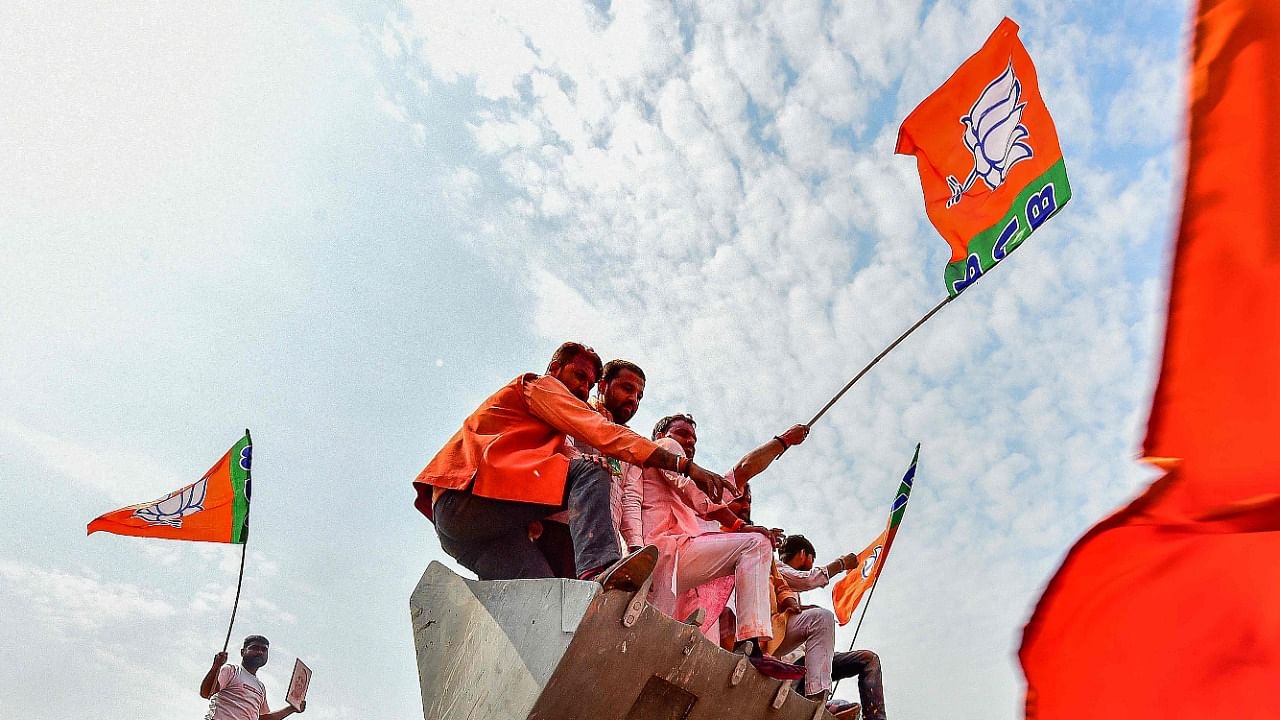
The Bharatiya Janata Party (BJP) is likely to form a second consecutive government in the northern states of Uttar Pradesh and Uttarakhand. As per the latest data, the saffron party is leading in 271 seats in Uttar Pradesh, while the Akhilesh Yadav-led Samajwadi Party, its closest competitor, leads in 123 seats.
Similarly, in Uttarakhand, the BJP leads in 43 seats while the Congress recorded the next highest number (24 seats).
The BJP is heading for a landslide victory in the country's most populous state, something that has not happened in over three decades. No party has won the UP Assembly elections in two consecutive attempts till now .
The 2002 Assembly elections saw a win for the Mulayam Singh Yadav-led Samajwadi Party (SP) over Mayawati's Bahujan Samaj Party (BSP). The 2007 elections saw a victory for Mayawati with the BSP securing 206 seats to SP's 97. The 2012 elections saw the SP return with 224 seats, with Akhilesh Yadav taking over the chief minister's chair.
The 2017 elections then saw a major turnaround, with a landslide win for the BJP in the state, securing 312 of 403 seats. This was the first time the BJP had won in UP after 1996 when the Kalyan Singh-led party won against Mulayam Singh's SP.
This will be the first time a party has retained the top spot for two consecutive elections, in over 30 years. The last time a single party governed UP for two successive terms was back in 1985, when the Congress party, led by Narayan Datt Tiwari, secured 269 out of the total 425 seats, succeeding V P Singh as the state's Chief Minister.
While both parties have contrasting ideologies, both parties have encountered a similar path in achieving such a milestone, if at all BJP forms a government for the second successive term in the northern state.
Congress, in the 1977 UP Elections, was thumped by the Janata Party (JP) and Ram Naresh Yadav, with the national party securing just 47 votes to JP's 352. But the party was quick to bounce back, grabbing a landslide victory in the subsequent 1980 election, securing 309 seats, with V P Singh taking the chair.
Similarily, BJP, in 2012, secured just 47 seats, as opposed to BSP's 80 and SP's 127. But the saffron party turned it around in the following rather one-sided elections, winning 312 of the total 403 seats, under Prime Minister Modi's leadership.
Uttar Pradesh has since been a stronghold for the party, and success in 2022 elections would turn it into a highly tactical region for the party in the 2024 Lok Sabha polls.
Uttarakhand, meanwhile, has been dominated by the BJP and the Congress, with both parties alternating at the head of the government after each election.
While UP and Uttarakhand are known for pushing out the incumbent party in every Assembly election, the latest results may herald the beginning of a new era with the BJP set to retain its throne in both states.
Check out the latest DH videos on Assembly elections 2022: